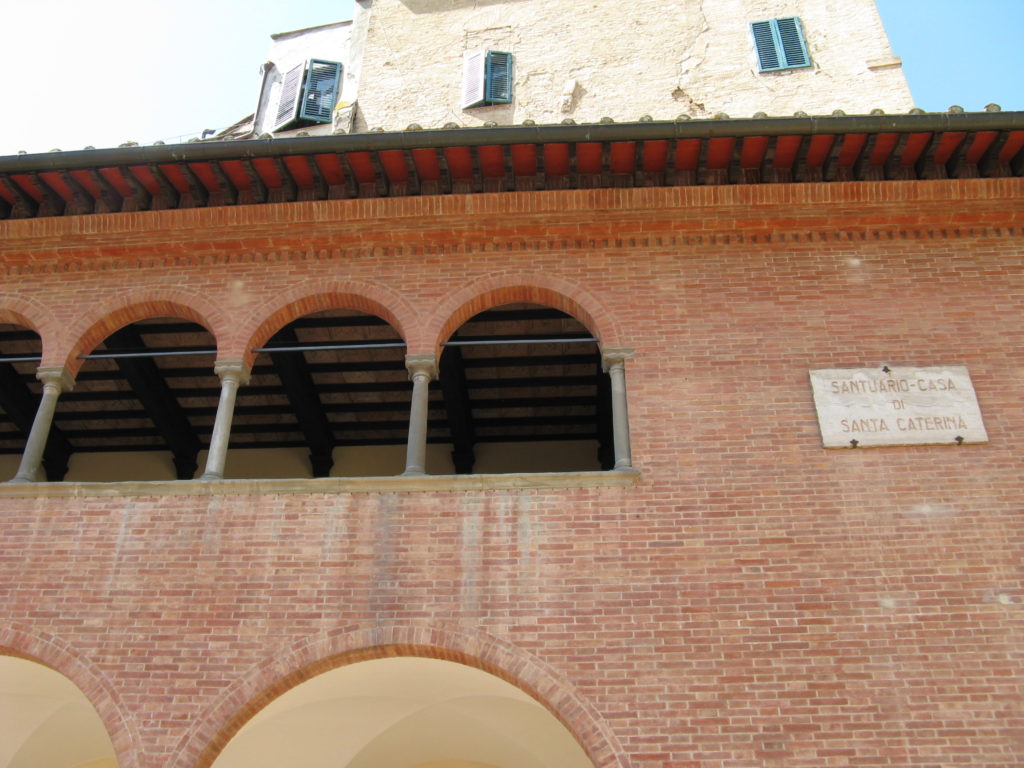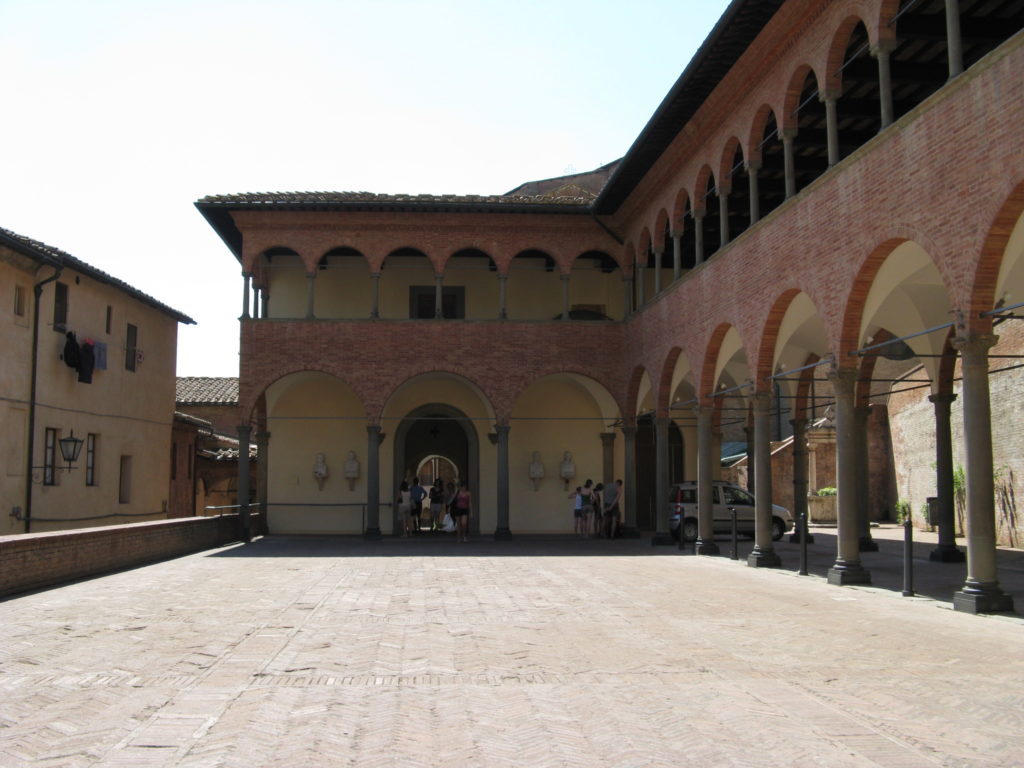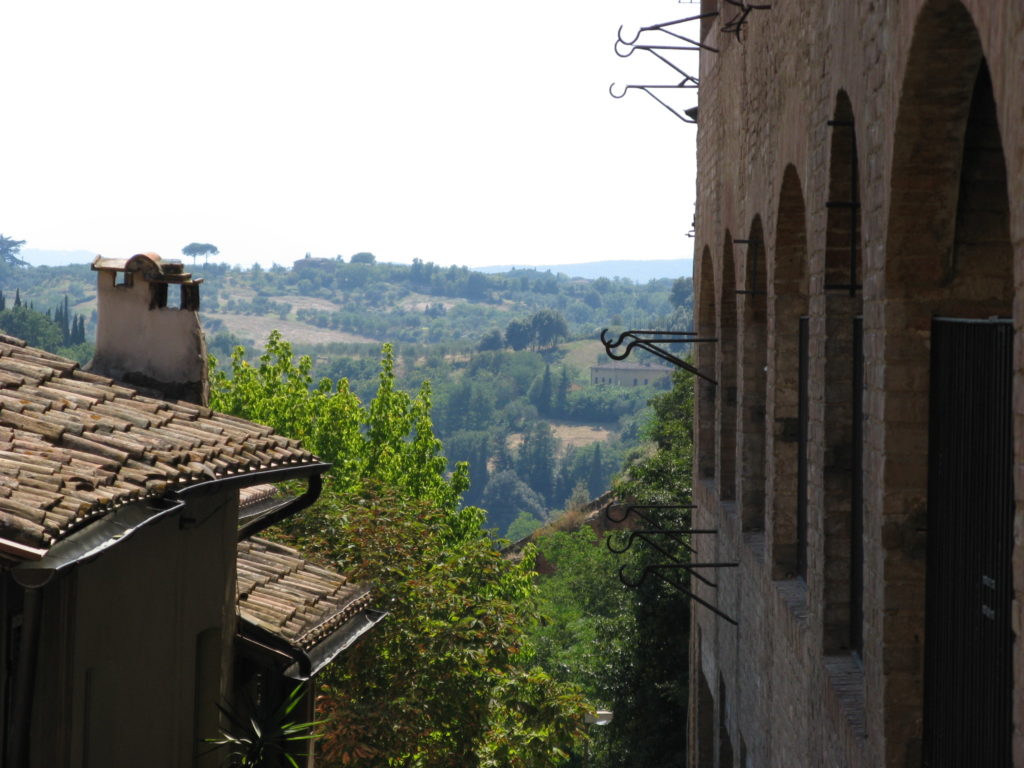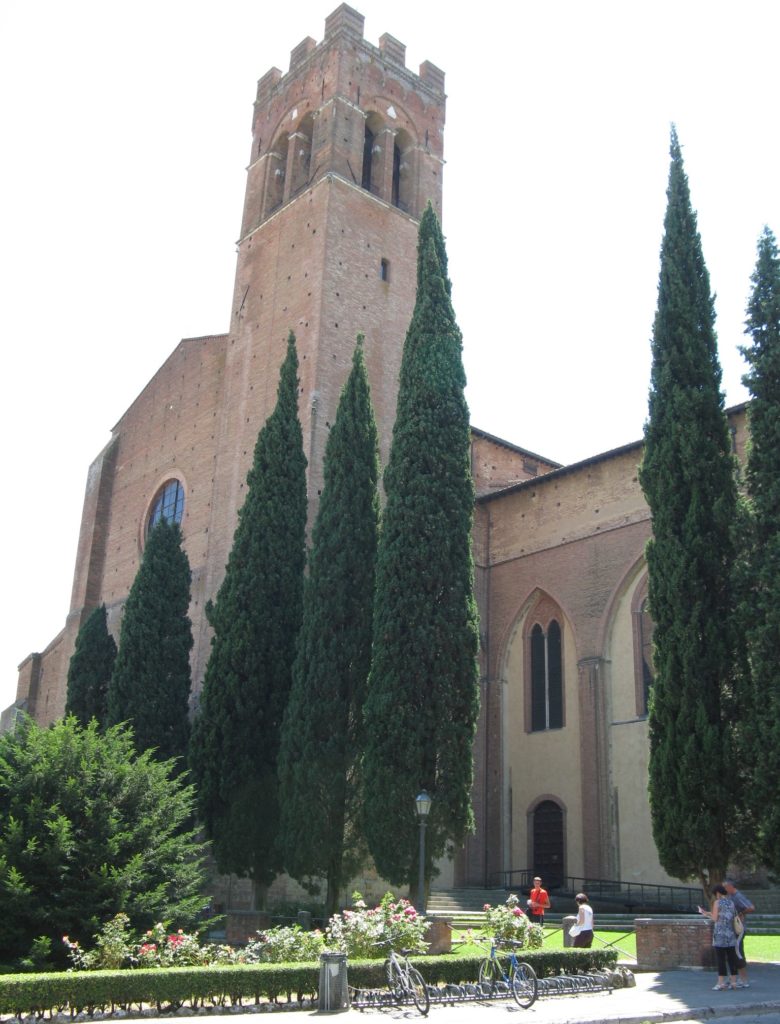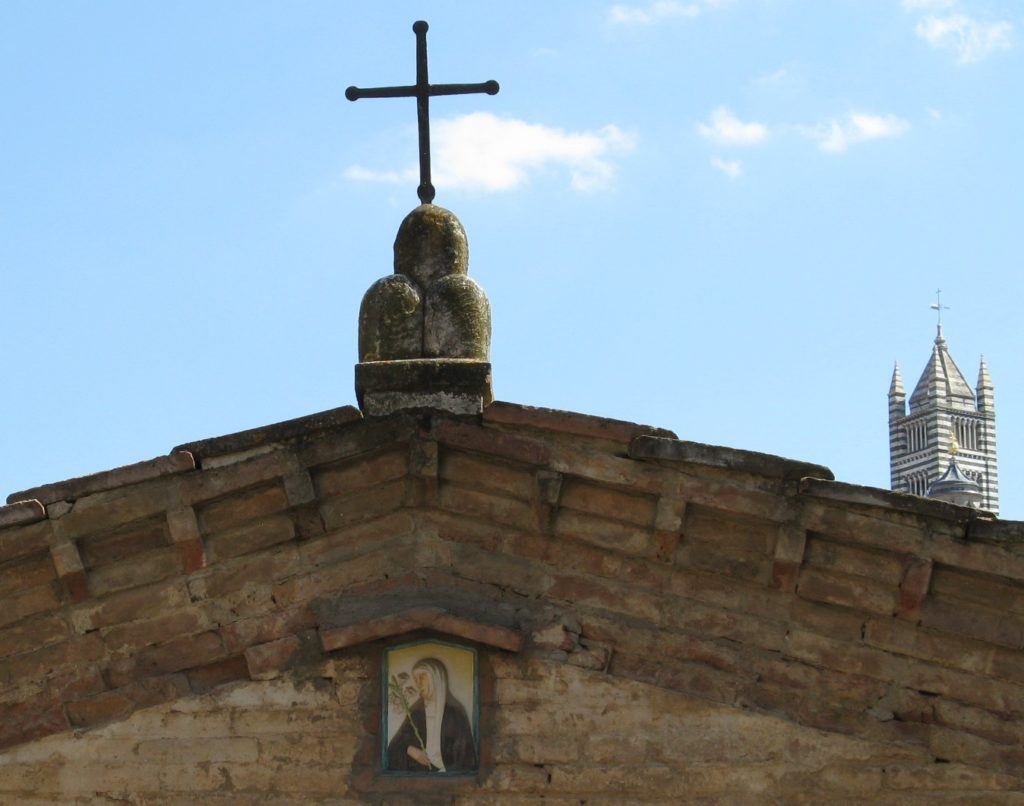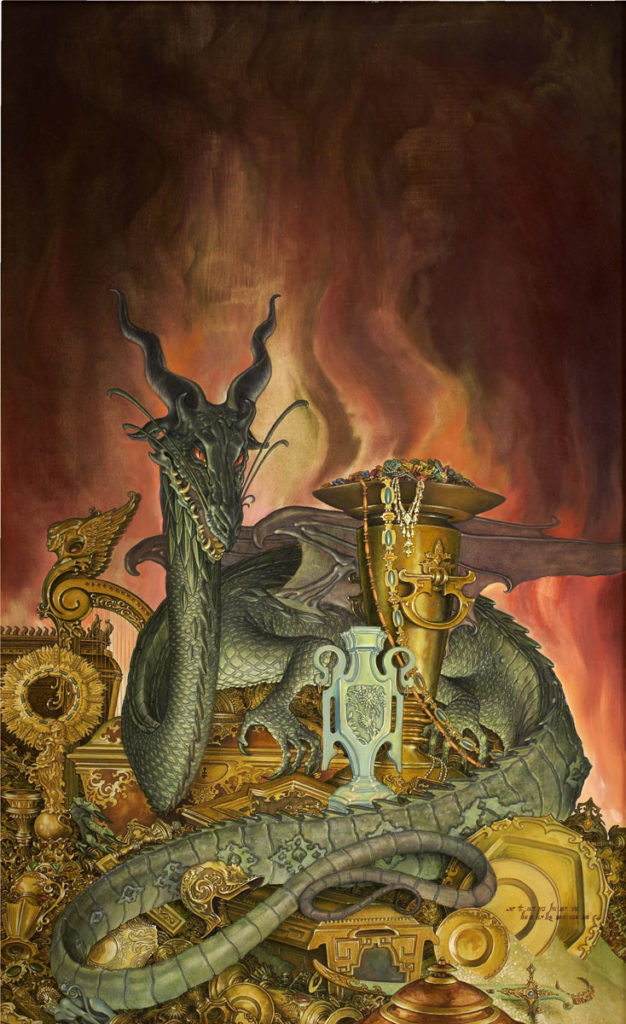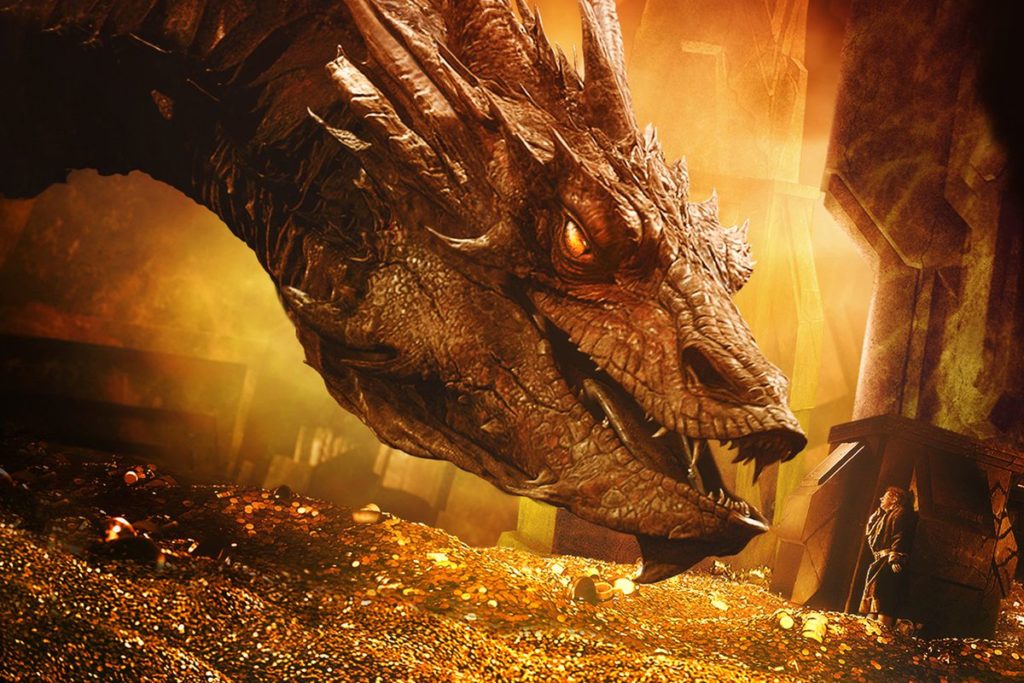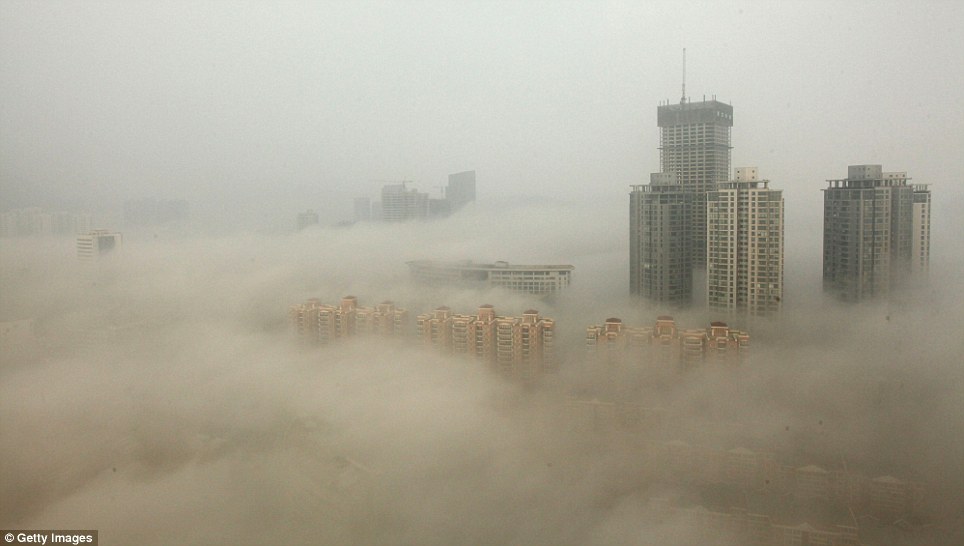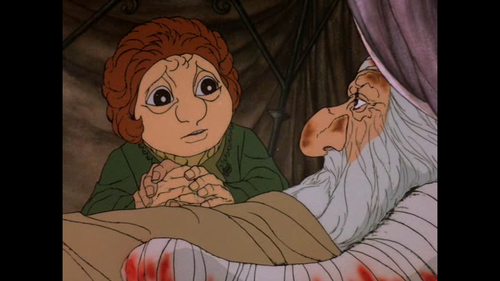In a letter (T266/G89) that St. Catherine wrote to Raymond of Capua, dated to about February 17, 1376, she develops an extended analogy between a soul learning to love God and a person approaching the sea.[i] She tells Raymond:
For when a soul sees not self for self’s sake, but self for God and God for God, inasmuch as he is supreme eternal Goodness, […] it finds in him the image of his creature, and in itself, that image, it finds him. That is, the love a man sees that God has for him, he, in turn, extends to all creatures, and so at once feels compelled to love his neighbour as himself, for he sees how supremely he himself is loved by God when he beholds himself in the wellspring of the sea of the divine Essence. He is then moved to love self in God and God in self, like a man who, on looking into the water, sees his image there and seeing himself, loves and delights in himself. If he is wise, he will be moved to love the water rather than himself, for had he not first seen himself, he could not have loved or been delighted by himself; nor removed the smudge on his face revealed to him in the well. Think of it like this […]: we see neither our dignity nor the defects that mar the beauty of our soul unless we go and look at ourselves in the still sea of the divine Essence wherein we are portrayed; for from it we came when God’s Wisdom created us to his image and likeness (171-172).[ii]
As McDermott explains, when a person comes to the sea (God) and looks into it, the first step is to observe “how supremely he himself is loved by God.” The fact that the person is loved by God is so arresting that they continue to stare into the water (125). Next, the person “beholds himself in the wellspring of the sea of the divine Essence,” and because the sea is so beautiful, the person is moved to love themselves in the sea (God) and God in themselves. The person understands that they are made in God’s image and therefore reflect goodness. This goodness cannot exist apart from the water (God) (125-126). The third step is “to love the water.” By doing this, the person is slowly transformed; “Because love always tends toward union with the beloved, the human person’s desire for union with God now emerges” (126). As the person becomes immersed in the sea, they realize that God also desires union with them. The last stage, according to McDermott’s recapitulation, is that as the person persists in gazing into the water, they come to notice their dissimilarity to God. Selfishness has left their face blemished (127). Thus, the soul begins to hate the selfish part of itself and to love more the part that resembles God (127-128).
Water is a substance replete with possible symbolic meanings and is employed in many literal and figurative roles in the Bible. So it is apropos that Catherine chooses to think in these terms. As a child running about the streets of Siena, she no doubt stared into many a well and fountain, as the city contains a plethora.
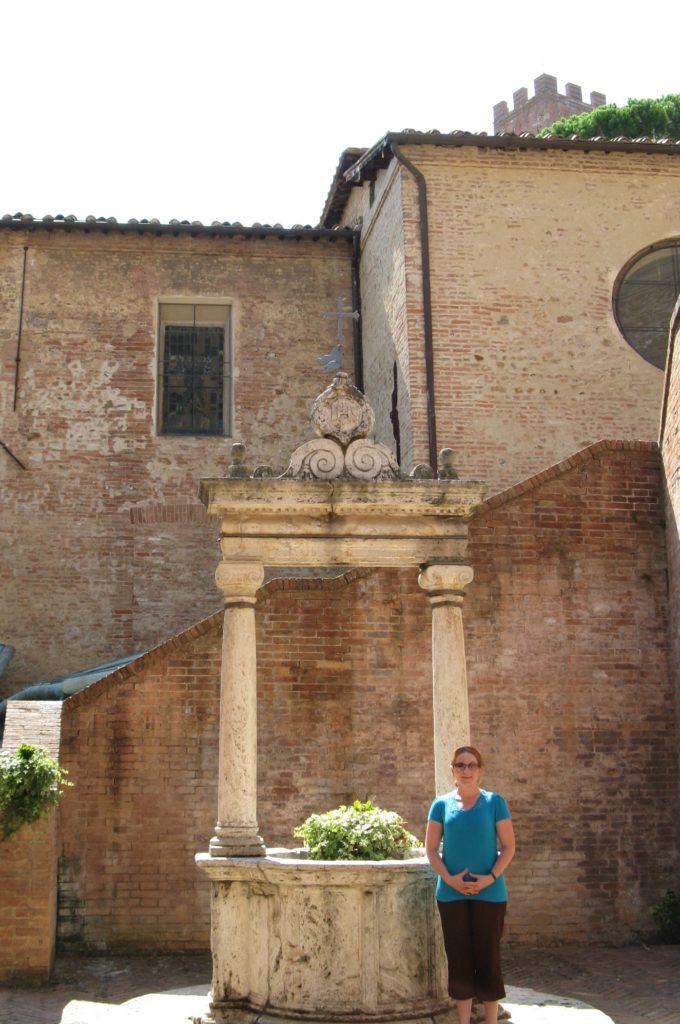
However, she consistently refers to God as the “mare pacifico.”[iii] And it was on a trip to Pisa in 1375 that Catherine first saw the Mediterranean, a year before the above letter was written. Indeed, it seems Catherine found great inspiration in the ocean during her travels. As Mary Ann Fatula notes, “The Trinity became for Catherine a ‘deep sea’ that she sought to enter with all the power of her being: ‘The more I enter you, the more I discover, and the more I discover, the more I seek you’” (66).[iv] In this beautiful chiasmus, quoted from the Dialogue’s conclusion (364), we hear resonances of St. Anselm’s (1033-1109) Proslogion.[v] And yet, in her letter, Catherine does not seem to articulate Bernard’s fourth degree of love in her progression. However, we must ask whether or not the person staring into God, the “peaceful sea,” once they have united themselves to God in abandoning self-interest, would be like the man depicted in what follows, having become immersed in the water.

In the chapter titled “Catherine’s Wisdom” in Raymond of Capua’s vita of St. Catherine of Siena—what is known as the Legenda maior—he relates a particular discussion between himself and the saint in which she outlines her beliefs concerning love.[vi] Though brief, Raymond tells us that through self-knowledge, “The soul that sees its own nothingness and knows that its whole good is to be found in the Creator forsakes itself and all its powers and all other creatures and immerses itself wholly in Him.”[vii] Indeed, the soul directs “its operations towards Him […] never alienating itself from Him, for it realizes that in Him it can find all goodness and perfect happiness” (86). This same idea, which aptly expresses the progression through Bernard’s first three degrees of love, is stated in Catherine’s Dialogue and Letters numerous times, but Raymond continues to relate her argument to describe a fourth degree. Catherine teaches that once the soul has come to an awareness of God’s beneficence and love, “Through this vision […], increasing from day to day, the soul is so transformed into God that it cannot think or understand or love or remember anything but God and the things of God. Itself and other creatures it sees [and remembers] only in God” (86).
To this synopsis, Raymond appends an analogy, illustrating for us Catherine’s thought. He tells us that when a soul has united with God, “it is like a man who dives into the sea and swims under the water: all he can see and touch is water and the things in the water, while, as for anything outside the water, he can neither see it nor touch it nor feel it.” Furthermore, “If the things outside the water are reflected in it, then he can see them, but only in the water and as they look in the water, and not in any other way.” Raymond finishes his summary of Catherine’s theology of love, as it were, by saying that “This […] is the true and proper way of delighting in oneself and all other creatures, and it can never lead to error, because, being necessarily always governed by God’s ordinance, it cannot lead to […] anything outside God, because all activity takes place within God” (86). The picture that Raymond paints is remarkably similar to St. Bernard’s fourth degree of love but far more vivid and comprehensible to someone existing in an embodied, terrestrial state. Moreover, it is quite clear that both Catherine and Raymond believe that the fourth degree of love can be reached on this earth, in this life, while Bernard shies away from this possibility. While Raymond certainly gleans his aquatic imagery from Catherine’s letter, his understanding of the fourth degree of love—in keeping with Bernard’s terminology—stems, in large part, from her Dialogue.[viii] Looking back, with Raymond’s analogy under our belts, the person standing on the beach in Catherine’s letter possesses the possibility of jumping into the sea and looking back to shore with a new perspective, viewing the world, then, from the opposite vantage point. In all actuality, what Raymond is doing is combining Catherine’s teachings into this powerful illustration, integrating what she writes in her letter with the thought she lays out in her Dialogue. He, in essence, glosses her theology of love.
While all hagiographers have their own agenda and will oftentimes bend the life of a holy person to fit certain clerically approved tropes, Raymond is faithful, I think, in this case to the message that Catherine so desperately sought to express. But more than this, he also shows us that Catherine lived according to her theology, even attaining the ultimate degree of love. For Catherine, the pivotal movement occurs when the growth of fidelity continues, as Noffke puts it, “deepening into friendship and even spousal relationship with God” (67). This, for Catherine, takes place in Christ’s heart—not the mouth, as in much of the commentary tradition on the Song of Songs. While Raymond may often call Catherine the “bride of Christ,” this is not the end of love’s stages as taught or lived by St. Catherine, nor is it for Raymond. For Catherine, the mouth is used for other purposes—meditation and ministry.
When the soul has reached the mouth of Christ and excellence, Catherine informs us in her Dialogue that, “she shows this by fulfilling the mouth’s functions;” that is, “she speaks […] with the tongue of holy and constant prayer.” This tongue possesses a dual expression: interiorly it prays for souls; exteriorly, the mouth “proclaims the teaching of […] Truth, admonishing, advising, testifying, without any fear” (140). This is how the human person attains Bernard’s fourth degree; they turn from their all-absorbing bond with God back to the world, extending, in their action, the love of God—God himself—in which they now perfectly participate. In its neighbors, the soul is “afforded the means to practise love of God,” which then results in a more unitive relationship with God (Cavallini 142).[ix] Raymond portrays Catherine making this transition at the beginning of the second part of her vita when she is called to a more active life.
Following Catherine’s gradual entrance into the public arena, she began her acts of charity, first simply doing good works for others, then personally calling people to spiritual conversion—metanoia—as well as being an example for her followers, and then even traveling and settling disputes between whole regions of Europe. As Raymond tells us, “The source and basis of all she did was love; and so charity towards her neighbour surpassed all her other actions” (116). Catherine resisted giving up her life of solitude to minister to others, but in the end, she shifted “from a love that centered essentially in her own intimate possession of God to a love that was outgoing and redemptive while still deeply grounded in contemplative prayer” (Noffke 65). In this way, Catherine managed to fuse the active and contemplative lives. Catherine progressed from exemplifying Bernard’s third degree to being the “Saviour of Souls,” seeking “both to unite with God and to serve vigorously her society and church” (Scott 36).[x]
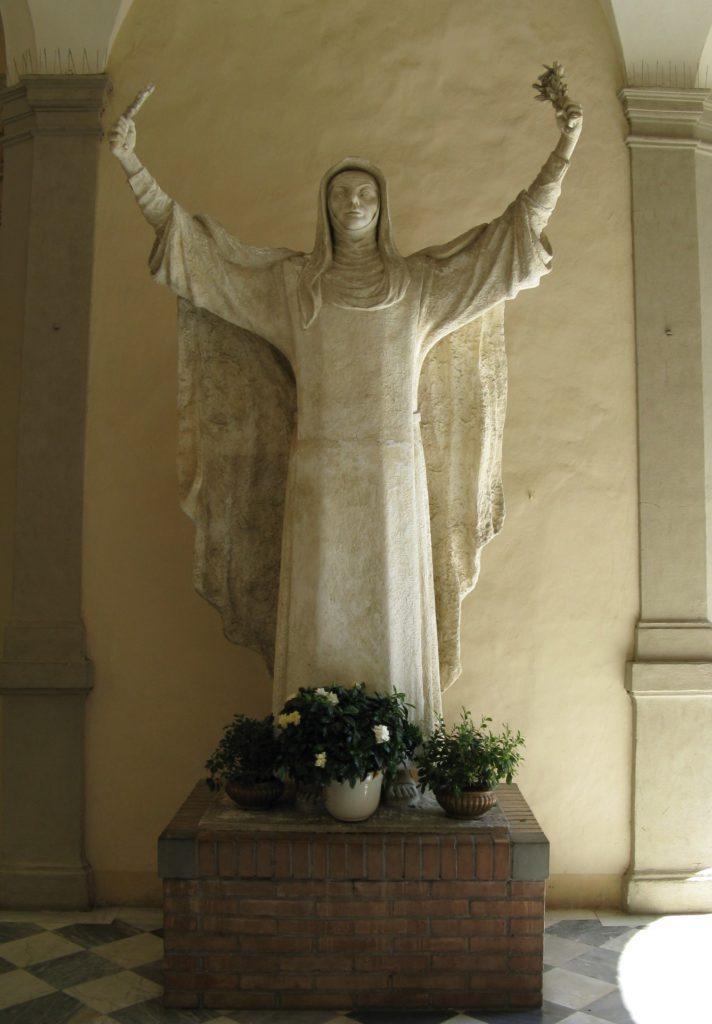
Thus, St. Catherine of Siena lived her own spiritual lessons. Raymond not only skillfully explains Catherine’s theology of love, but also shows us the final progression through Catherine herself. In this way, he makes what Bernard believed unattainable into an, at least possible, reality. Of course, Catherine was an exceptional person, and this lies at the heart of Raymond’s bid for her canonization (384). Having spent so much time together, there existed a special symbiosis between Raymond and Catherine, which allowed him to understand her in a way that her humility would not. His hagiographic effort points to her doctrine and gives it shape. Just as Catherine interpreted and enhanced St. Bernard’s degrees of love, Raymond glosses St. Catherine and brings the progression full circle by holding her up as an example of the fourth degree of most perfect and holy love. From humble beginnings and in the face of patriarchal strictures, Catherine has touched the lives of many and left an indelible mark upon the history of Western Christianity and theological thought. In her own words to Raymond of Capua—in her own hand—she says that God provided her with an aptitude for writing “so that when I descended from the heights [of contemplation], I might have a little something with which I could vent my heart, lest it burst” (Letter 272).[xi]
Hannah Zdansky, Ph.D.
University of Notre Dame
Further Reading:
Ashley, Benedict. “St. Catherine of Siena’s Principles of Spiritual Direction.” Spirituality Today 33 (1981): 43-52.
Astell, Ann W. Eating Beauty: The Eucharist and the Spiritual Arts of the Middle Ages. Ithaca: Cornell University Press, 2006.
Astell, Ann. “Heroic Virtue in Blessed Raymond of Capua’s Life of Catherine of Siena.” Journal of Medieval and Early Modern Studies 42 (2012): 35-57.
Catherine of Siena: The Creation of a Cult. Ed. Jeffrey Hamburger and Gabriella Signori. Turnhout: Brepols, 2013.
Coakley, John W. Women, Men, and Spiritual Power: Female Saints and Their Male Collaborators. New York: Columbia University Press, 2006.
Friedman, Joan Isobel. “Politics and the Rhetoric of Reform in the Letters of Saints Bridget of Sweden and Catherine of Siena.” Livres et lectures de femmes en Europe entre Moyen Âge et Renaissance. Ed. Anne-Marie Legaré and Bertrand Schnerb. Turnhout: Brepols, 2007. 279-294.
Gardner, Edmund G. “St. Catherine of Siena.” The Hibbert Journal 5 (1906): 570-589.
Hollywood, Amy. Acute Melancholia and Other Essays: Mysticism, History, and the Study of Religion. New York: Columbia University Press, 2016.
Levasti, Arrigo. My Servant, Catherine. Trans. Dorothy M. White. London: Blackfriars Publications, 1954.
Luongo, F. Thomas. “Cloistering Catherine: Religious Identity in Raymond of Capua’s Legenda maior of Catherine of Siena.” Studies in Medieval and Renaissance History 3 (2006): 25-69.
Luongo, F. Thomas. The Saintly Politics of Catherine of Siena. Ithaca: Cornell University Press, 2006.
Mews, Constant. “Catherine of Siena, Florence, and Dominican Renewal: Preaching through Letters.” Studies on Florence and the Italian Renaissance in Honour of F. W. Kent. Ed. P. F. Howard and C. Hewlett. Turnhout: Brepols, 2016. 387-403.
Mews, Constant. “Thomas Aquinas and Catherine of Siena: Emotion, Devotion, and Medicant Spiritualities in the Late Fourteenth Century.” Digital Philology: A Journal of Medieval Cultures 1 (2012): 235-252.
Noffke, Suzanne. “Catherine of Siena, Justly Doctor of the Church?” Theology Today 60 (2003): 49-62.
Noffke, Suzanne. “Catherine of Siena.” Medieval Holy Women in the Christian Tradition c. 1100-c. 1500. Ed. A. Minnis and R. Voaden. Turnhout: Brepols, 2010. 601-622.
Tylus, Jane. Reclaiming Catherine of Siena: Literacy, Literature, and the Signs of Others. Chicago: University of Chicago Press, 2009.
Walsh, Ann. “St. Catherine of Siena: Doctor of the Church.” Supplement to Doctrine and Life 8 (1970): 134-144.
Notes:
[i] For the dating, see Noffke’s The Letters, vol. 2, p. 2. In what follows, however, I am making use of the letter as translated by Kenelm Foster and Mary John Ronayne in I, Catherine: Selected Writings of St. Catherine of Siena. London: Collins, 1980. Suzanne Noffke renders the Italian fonte, which possesses multiple meanings, as the very literal ‘fountain.’ I think this word would best be translated as ‘wellspring,’ as in Foster and Ronayne’s edition, or even ‘fount,’ both meaning the water itself. ‘Wellspring’ also better captures the image of Christ as the source of living water (John 4:7-15; 7:37-38).
[ii] Insofar as the water acts as a mirror, Catherine’s thinking here shares much with St. Augustine’s in De Trinitate (c. 400-416).
[iii] At the end of the Dialogue—after having exclaimed “O abyss! O eternal Godhead! O deep sea!”—Catherine concludes her discussion of faith by saying, “Truly this light is a sea, for it nourishes the soul in you, peaceful sea, eternal Trinity. Its water is not sluggish; so the soul is not afraid because she knows the truth. It distills, revealing hidden things, so that here, where the most abundant light of faith abounds, the soul has, as it were, a guarantee of what she believes. This water is a mirror in which you, eternal Trinity, grant me knowledge; for when I look into this mirror, holding it in the hand of love, it shows me myself, as your creation, in you, and you in me through the union you have brought about of the Godhead with our humanity” (365-366).
[iv] See Fatula’s Catherine of Siena’s Way. Wilmington, DE: Michael Glazier, 1987.
[v] Anselm petitions God: “Teach me to seek you, and as I seek you, show yourself to me, for I cannot seek you unless you show me how, and I will never find you unless you show yourself to me. Let me seek you by desiring you, and desire you be seeking you; let me find you by loving you and love you in finding you” (243). This language is very similar to the opening of St. Augustine’s Confessions. For this translation, see The Prayers and Meditations of Saint Anselm with the Proslogion. Trans. Benedicta Ward. New York: Penguin Books, 1973.
[vi] The English translation used is the following: The Life of St. Catherine of Siena. Trans. George Lamb. Rockford, IL: TAN Books and Publishers, Inc., 2003. The work on which this is based is S. Caterina da Siena. Trans. Giuseppe Tinagli. Siena: Cantagalli, 1934, with reference to the Latin Bollandist text of 1860.
[vii] On the importance of self-knowledge, see Thomas McDermott’s “Catherine of Siena’s Teaching on Self-Knowledge.” New Blackfriars 88 (2007): 637-648. In short, Catherine views self-knowledge as the fundamental basis of spiritual development (643).
[viii] Without a doubt, Raymond was very familiar with the material of Catherine’s Dialogue, for he quotes it to a great extent in one of the later chapters in the vita, titled “For Christ Alone.” In fact, another one of Catherine’s letters addressed to him (T272/G90) also recounts some of the same ideas as found in the Dialogue.
[ix] See Giuliana Cavallini’s Catherine of Siena. London: Geoffrey Chapman, 1998.
[x] See Karen Scott’s “St. Catherine of Siena, ‘Apostola.’” Church History 61 (1992): 34-46.
[xi] For this letter, see pp. 538-39 of Le Lettere di Santa Caterina da Siena. Ed. Antonio Volpato, in Santa Caterina da Siena: Opera Omnia. Testi e concordanze. Ed. Fausto Sbaffoni. Pistoia: Provincia Romana dei Frati Predicatori, 2002. The translation is taken from p. 156 of Jane Tylus’s chapter “Mystical Literacy: Writing and Religious Women in Late Medieval Italy” in A Companion to Catherine of Siena. Ed. Carolyn Muessig, George Ferzoco, and Beverly Mayne Kienzle. Leiden: Brill, 2012.

